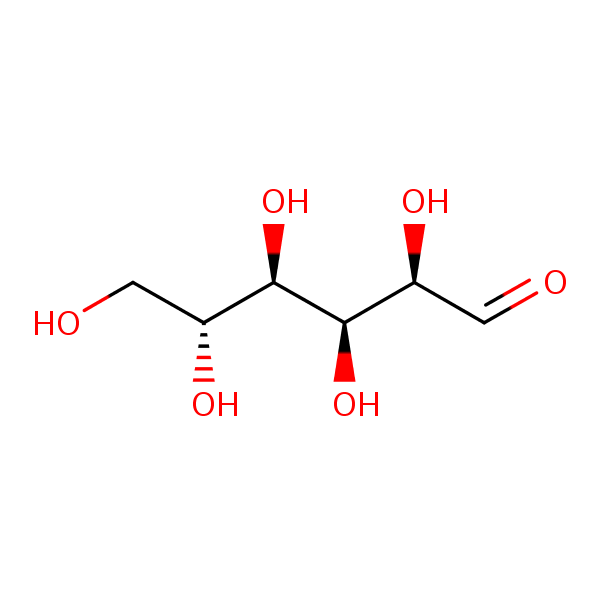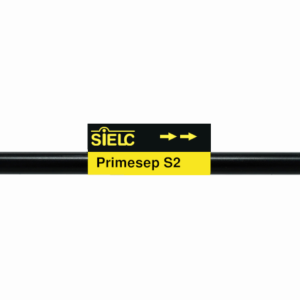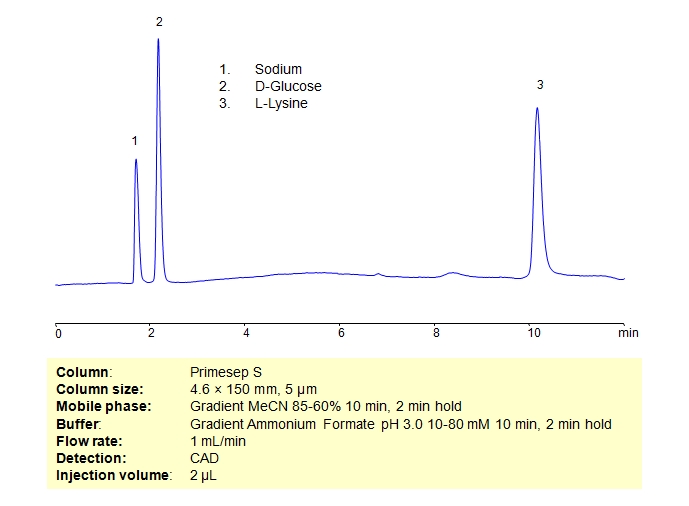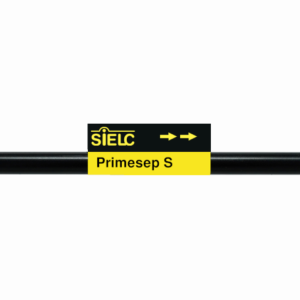| CAS Number | 50-99-7 |
|---|---|
| Molecular Formula | C6H12O6 |
| Molecular Weight | 180.156 |
| InChI Key | WQZGKKKJIJFFOK-GASJEMHNSA-N |
| LogP | -3.24 |
| Synonyms |
|
Applications:
HPLC Method for Separation of Glucose and Lysine on Primesep S Column
January 25, 2023
HPLC Method for Separation of Glucose and Lysine on Primesep S by SIELC Technologies
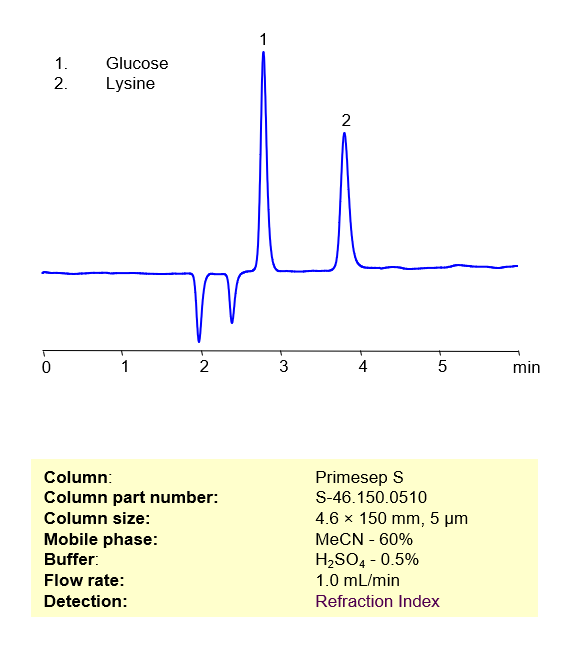
Lysine is an essential amino acid typically found in meat, and also cereal grains. It can be manufactured on a large scale by fermenting glucose, one of the most abundant sugars in the world. These two biological compounds can be retained, separated, and analyzed on a normal-phase Primesep S column with a simple isocratic mobile phase consisting of Acetonitrile (MeCN), water (H2O), and Sulfuric acid (H2SO4). This analysis method can be detected via Refraction Index (RI) Detection.
High Performance Liquid Chromatography (HPLC) Method for Separation of Glucose and Lysine
Condition
| Column | Primesep S , 4.6×150 mm, 5 µm, 100A |
| Mobile Phase | MeCN/H2O – 75/25% |
| Buffer | H2SO4 – 0.5% |
| Flow Rate | 1.0 ml/min |
| Detection | Refraction Index |
| Peak Retention Time | 4.81 min |
Description
| Class of Compounds | Drug |
| Analyzing Compounds | Glucose, Lysine |
Application Column
Primesep S2
Column Diameter: 4.6 mm
Column Length: 150 mm
Particle Size: 5 µm
Pore Size: 100 A
Lysine

HPLC Separation of Mixture of D-Glucose and L-Lysine on Primesep S Column
February 7, 2019
| Column | Primesep S, 4.6×150 mm, 5 µm, 100A |
| Mobile Phase | Gradient MeCN – 85-60%, 10 min 2 min hold |
| Buffer | Gradient AmFm pH 3.0, 10-80 mM, 10 min 2 min hold |
| Flow Rate | 1.0 ml/min |
| Detection | CAD (Corona) MS- compatible mobile phase |
| Class of Compounds |
Sugar, Amino Acid, Hydrophilic, Ionizable, Vitamin, Supplements |
| Analyzing Compounds | D-Glucose, L-Lysine |
Application Column
Primesep S
The Primesep family of mixed-mode columns offers a wide variety of stationary phases, boasting unprecedented selectivity in the separation of a broad array of chemical compounds across multiple applications. Corresponding Primesep guard columns, available with all stationary phases, do not require holders. SIELC provides a method development service available to all customers. Inquire about our specially-tailored custom LC-phases for specific separations.
Select optionsLysine

HPLC Separation of Sugars on Primesep S2 Column
July 14, 2011
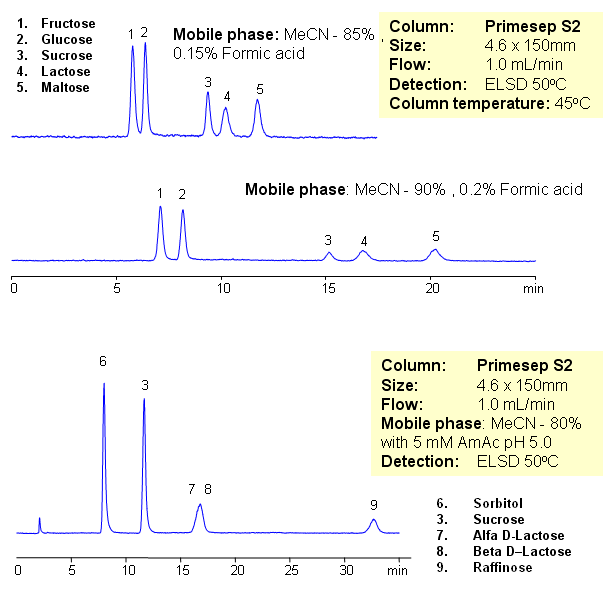
Five sugars were separated on a Primesep S2 HILIC column with LC/MS compatible conditions. Various mobile phase produce different selectivity and separation. Method can be used as alternative to aminopropyl column. Primesep S2 column is stable and does not undergo rapid hydrolysis like aminopropyl columns.
| Column | Primesep S2, 4.6×150 mm, 5 µm, 100A |
| Mobile Phase | MeCN/H2O |
| Buffer | AmAc pH 5.0, Formic Acid |
| Flow Rate | 1.0 ml/min |
| Detection | ELSD 50C |
| Class of Compounds |
Drug, Acid, Monocarboxylic acid, Hydrophilic, Ionizable, Hormone |
| Analyzing Compounds | Fructose, Glucose, Sucrose, Lactose, Maltose, Sorbitol, Sucrose, Alfa D-Lactose, Beta D–Lactose, Raffinose |
Application Column
Primesep S2
The Primesep family of mixed-mode columns offers a wide variety of stationary phases, boasting unprecedented selectivity in the separation of a broad array of chemical compounds across multiple applications. Corresponding Primesep guard columns, available with all stationary phases, do not require holders. SIELC provides a method development service available to all customers. Inquire about our specially-tailored custom LC-phases for specific separations.
Select optionsGlucose
Lactose
Maltose
Raffinose
Sorbitol
Sucrose
alpha-D-Lactose
beta-D-Lactose

